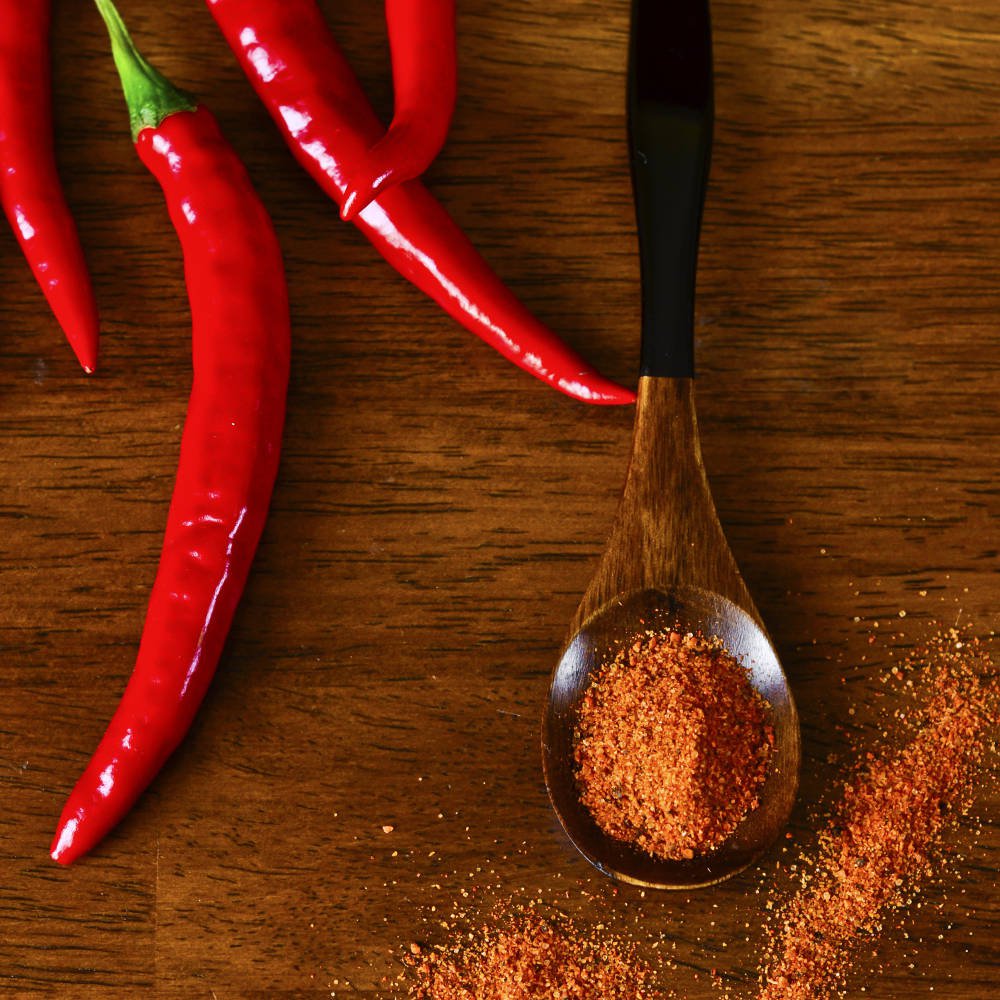Nutritional values of paprika
Paprika, obtained by grinding chilli seeds more or less strong, is a spice that will allow you to embellish different dishes of your daily life. With 280 calories per 100 grams, paprika may seem caloric, but it is not, since it is used sparingly. For 100 grams of paprika, it does not provide cholesterol , but a little fat (13 grams) and protein (14 grams). On the other hand, it is a good source of carbohydrates (35 grams) in the form of fiber and simple sugar (10 grams).
Vitamins and minerals of paprika
Excellent source of vitamin C , paprika helps to be a contribution of antioxidants : necessary for bone and dental training, they are also perfect for overcoming many cancers and skin aging. Source of iron , it allows the manufacture of red blood cells and facilitates the transport of oxygen. Rich in manganese and copper , these two elements help prevent the damage caused by free radicals. The vitamin B6 that paprika contains ensures a proper functioning of the immune system. Finally, make sure you have good blood clotting with vitamin K paprika.
The paprika in the kitchen
Essential in Hungarian, Russian, Tex-Mex and Spanish cuisine, this red pepper, sweet or strong, will transform all your dishes by bringing them warmth and color. First consumers, Spaniards decorate and decorate their dishes with this sweet pepper: in their deli meats like chorizo and soubressade, paprika brings its typical color and its pronounced fruity taste. The Portuguese color their rice at the time of cooking with paprika. In Hungary, the famous goulash (stew of beef with tomato ) could not do without paprika. BBQ sauce uses smoked paprika to add that deliciously sweet-sour taste to tex-mex marinated chicken .
Paprika, obtained by grinding chilli seeds more or less strong, is a spice that will allow you to embellish different dishes of your daily life. With 280 calories per 100 grams, paprika may seem caloric, but it is not, since it is used sparingly. For 100 grams of paprika, it does not provide cholesterol , but a little fat (13 grams) and protein (14 grams). On the other hand, it is a good source of carbohydrates (35 grams) in the form of fiber and simple sugar (10 grams).
Vitamins and minerals of paprika
Excellent source of vitamin C , paprika helps to be a contribution of antioxidants : necessary for bone and dental training, they are also perfect for overcoming many cancers and skin aging. Source of iron , it allows the manufacture of red blood cells and facilitates the transport of oxygen. Rich in manganese and copper , these two elements help prevent the damage caused by free radicals. The vitamin B6 that paprika contains ensures a proper functioning of the immune system. Finally, make sure you have good blood clotting with vitamin K paprika.
The paprika in the kitchen
Essential in Hungarian, Russian, Tex-Mex and Spanish cuisine, this red pepper, sweet or strong, will transform all your dishes by bringing them warmth and color. First consumers, Spaniards decorate and decorate their dishes with this sweet pepper: in their deli meats like chorizo and soubressade, paprika brings its typical color and its pronounced fruity taste. The Portuguese color their rice at the time of cooking with paprika. In Hungary, the famous goulash (stew of beef with tomato ) could not do without paprika. BBQ sauce uses smoked paprika to add that deliciously sweet-sour taste to tex-mex marinated chicken .


